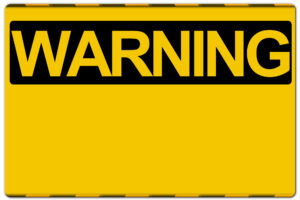Finding journalists sounds easy. Earlier in this series of blog entries, we looked at how big it was as a profession and realised that there were over 100,000 of them in the UK alone. Unfortunately, we also took some time to look at how ludicrous some of the pitches they receive can be.
The trick, as we established in that linked blog entry, is how to ensure you find the right journalist. First,we’d urge you not to go too scattergun. There are plenty of online services offering help finding journalists because they have a list of thousands or whatever. They will take your press release or another piece of collateral, stick it into a mass mailer and send it to literally thousands of people.
Here’s the big secret. Most of those people will indeed be journalists or some sort of media outlet. They will be able to publicise you if your release catches their attention. Unfortunately, it’s unlikely to do so. The big problem is that professionals can spot these mass market things from quite a distance. They’re generally distinguished by having an “unsubscribe” button to be GDPR compliant and this tells journalists that everybody has the same story already. That makes it a great deal less appealing.
This is why we always recommend a targeted approach. Less is more, and other clichés and yes of course we know that should be “fewer” is more.
So how do you find these people and what do you approach them with?
Journalists are chatty
 Ideally, a journalist should be a good listener. They should ask a question that leads to a discussion and glean insights from the speaker.
Ideally, a journalist should be a good listener. They should ask a question that leads to a discussion and glean insights from the speaker.
Phooey. Anyone who has met our lead trainer Guy will be well aware that a number of them can’t wait to tell you all about themselves. Fortunately, you can use this to your advantage. Follow them on Twitter and better still, check their profiles on Linkedin. This is where they will have set out their stalls professionally and the switched-on ones will make their interests and the publications for which they write more than clear.
Also join the groups they’re likely to look at. This doesn’t mean searching for journalism groups, which are frequently packed out with people looking for the numbers for various press offices (people think journalists have researchers to find these things out for them, do they heck) and links to articles they’ve just published.
Interest groups
We recommend instead that you join groups into which you can add something useful. If you’re in manufacturing, look for manufacturing groups. If you’re in IT, join an IT group Nine times out of ten the best journalists will have joined already. Start answering questions and helping people, put the odd post up yourself; eventually it’s likely that journalists will start to approach you as a contact.
Look also at other social media. At the time of writing, Twitter has recently been acquired by Elon Musk and a lot of people are predicting its imminent demise. Our rule is that if something has been imminent for more than a month there’s a good chance it’s not going away even if its character is likely to change. Facebook can also be useful and the jury is out on Mastodon.
We’ve deliberately stuck with the more text-based networks. Many people are heavily engaged on Instagram but it’s a little trickier to engage when someone’s communication is primarily through images. Essentially, assess where your ideal journalist is likely to hang out and address that network.
Caveat: finding journalists doesn’t mean threatening them
 There’s a theory among some press spokespeople and business owners that the best way to attract a journalist’s attention is to inform them you’re an advertiser and will withdraw your spending if they don’t write about you. To which we’d say no, no and for the third time, no.
There’s a theory among some press spokespeople and business owners that the best way to attract a journalist’s attention is to inform them you’re an advertiser and will withdraw your spending if they don’t write about you. To which we’d say no, no and for the third time, no.
Of course, there are some smaller blogs and publications that only cover the people who advertise them and if that’s a financial model that works, fine. Equally, there are opportunities for companies with deeper pockets to sponsor publications and supplements, maybe even in the national press. The readers tend to spot this after a while, though. They carry less weight than pure, earned press coverage and you’re better off in the sections people will take seriously.
It’s also true that some journalists will thoroughly enjoy winding the advertising team up by ignoring any entreaties from would-be advertisers carrying money. Commentators are mostly proud of their independence; threaten it or try to suggest it’s compromised and they are likely to walk away.
Finding journalists – which ones?
Some readers might be feeling as if they’ve been given a satnav and no direction. Here is where you find journalists. What journalists? How do you know who they are?
This is where you have to do some homework. There is no point in wanting press coverage if you’re not going to check the press out. Members of the press will be alert to people who haven’t read, watched or listened to the media they are approaching. Here are a coupleof things that have happened during lead trainer Guy‘s career:
- Working on a Guardian supplement for small and micro businesses. Guy sent a note out to get help and information on technology for small traders. One PR person sent him a pitch for a financial institution’s share trading platform. Guy said he meant small traders as in small businesses that traded things. The spokesperson wrote back and said, “These are small traders, unless you’re looking for something for Fred and his market stall!” Micro businesses like market stalls were exactly the sort of target he had in mind.
- In the same supplement, people would approach Guy with suggestions for the people page. “We are a small business and have a new director, it’s newsworthy”, they said. In nine years of publishing the small business supplement, there never was a “people page”. The people pitching clearly hadn’t looked – or had persuaded themselves there was such a page.
Your first job, if you want to target a publication, is to look at the publication itself. Check the masthead, the credits section where you’ll find the editor, the features editor, the news editor, all those people. Find them on LinkedIn.
Finding journalists then sending something
Let’s say you now know who you need to approach. You want to send them something, information, for example. You’ve located them, their email is on the masthead. So what do you do next?
There are different approaches and you need to keep an eye on what works. You also need to consider what feels comfortable to you personally. The easiest thing, you’d think, is to send a quick email. My company is doing X, we think it’s important because Y, would you like a chat? That can work sometimes.
The more traditional approach is the press release, which consists of:
- Snappy and meaningful (not “clever”) headline
- Subtitle expanding on why the headline is important
- Intro paragraph with who, what, when, where, why
- More detail in following short paragraphs but make sure the journalist gets the gist if they only glance through the first paragraph
- Contact details, who to ask for pictures and further quotes
The error some people make is to follow up with a call either too quickly or too late. Journalists are unlikely to welcome followup calls even when they’re well-timed but we have seen:
- People leaving it two weeks before calling and following up – possibly because a client is breathing down their neck.
- People hitting “send” and then calling within two minutes. Genuinely, this has happened to us.
Calling with something to say
It can be frustrating when you send your release out and nobody appears interested. Some journalists will offer feedback on what they felt went wrong. Very few of them are pleased with a call that just says “I wanted to check you got my press release” although a few people still put those calls in.
If you’re convinced your announcement was newsworthy then it can be worth a followup call but first, be prepared for a rebuff; second, try to avoid asking whether the release arrived. “Yes” and a hangup is a possibility. “Did it bounce back?” tells you that they think you know whether the release got through and they’re not going to engage. There is a way to avoid these outcomes.
Suppose you send a release out about this inexpensive new smartphone you’ve made because you are convinced people are spending too much money. Your call might go: hello, that press release I sent about the Cheapophone, we’ve now struck a deal with X mobile phone network to sell it.” Or “We now have a customer who’s adopted them for her business and she’s willing to talk.” Or “We’ve just heard a major technology analyst has rated us in the top quadrant” or something.
It could be anything but try never to be as bland as “did you get my press release?” It’s too easy to terminate the call.



